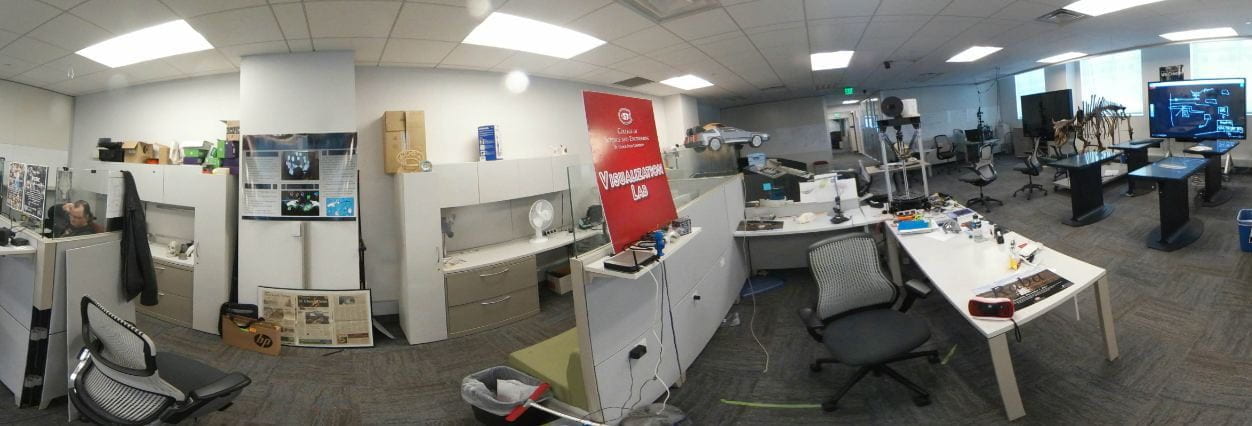Background
The Visualization Lab team at SCSU has been busy this summer working on an exciting new project! MN NICE, an acronym for Minnesota Networked Immersive Collaborative Environment, is a revolutionary Virtual Reality experience that will bring your classroom to life!
MN NICE is an innovative virtual classroom that will consist of networking between multiple users. Students, guided by their professor, will soon be able to engage with their education like never before. We invite you to follow us on this extraordinary journey that will help to transform the educational experience for students across Minnesota.
Development Overview
Development began on June 4th. Initially, it was all about making sure the infrastructure was stable. The infrastructure is the base amount of code required to allow a multiplayer experience.
Our team set the stage for how users can see and interact with each other in the virtual world. In addition to the infrastructure, the game requires a server to support connections between multiple clients. The server acts as an intermediary for all activity that occurs in the virtual environment, and clients are devices such as VR headsets and/or tablet devices that connect to the server. This opens the door to many possibilities for interaction between students and educators alike.
Marty and Josh, testing out an early MN NICE prototype:
A huge step towards interacting with the virtual environment was made on August 13th—the introduction of the user’s physical features. The physical representation of the user is referred to as an avatar. The avatar’s features are currently a head, eyes, and hands. An avatar for each player will establish the relative position of each player in relation to one another.
The head is a sphere upon which the eyes are placed. Eyes are helpful for indicating which way the user is looking. The hands are square-shaped objects that simply represent the position and function of the improved hands that will be added later.
A table was created along with the avatar to test the physical abilities of the hands. The table originally served to indicate if the hands could rest atop it. Such an indication was a crucial milestone towards assessing the physical correlation of objects in the environment.
Blocks of incrementally heavier weights joined quickly after the table’s entrance, marking a chance for testing dynamic interactions. At first, blocks could only be picked up by the user if the block was balanced between both hands—until the momentous implementation of a grip mechanic on September 5th. Now the user can simply place their hand near a block and pull a trigger to pick it up.
A prototype of the virtual classroom—which will act as the main environment that users will find themselves in—was developed into a usable state around late July/early August.
An early test of the MN NICE concept proof:
Another major breakthrough was the synchronization of the virtual space with the physical space. This alignment of users and their avatars will seamless interaction in the virtual world alongside the physical world, ensuring users don’t collide with each other or otherwise encounter physical inaccuracies.
More improvements to the network structure are constantly being added to streamline efficiency of data sharing over the network (the network consists of the server linked to clients).
On the immediate horizon, an interactive puzzle game is currently in development with a usable prototype being tested.
We also have a platform for the purpose of controlling the game in the works that we’re referring to as the Game Master. The Game Master will be a mobile app for tablet devices that professors can use to manage the makeup of the classroom experience for students—environments can be changed and objects in the environment added or removed at the professor’s discretion.
Many more developments are on the way, so stay tuned!


